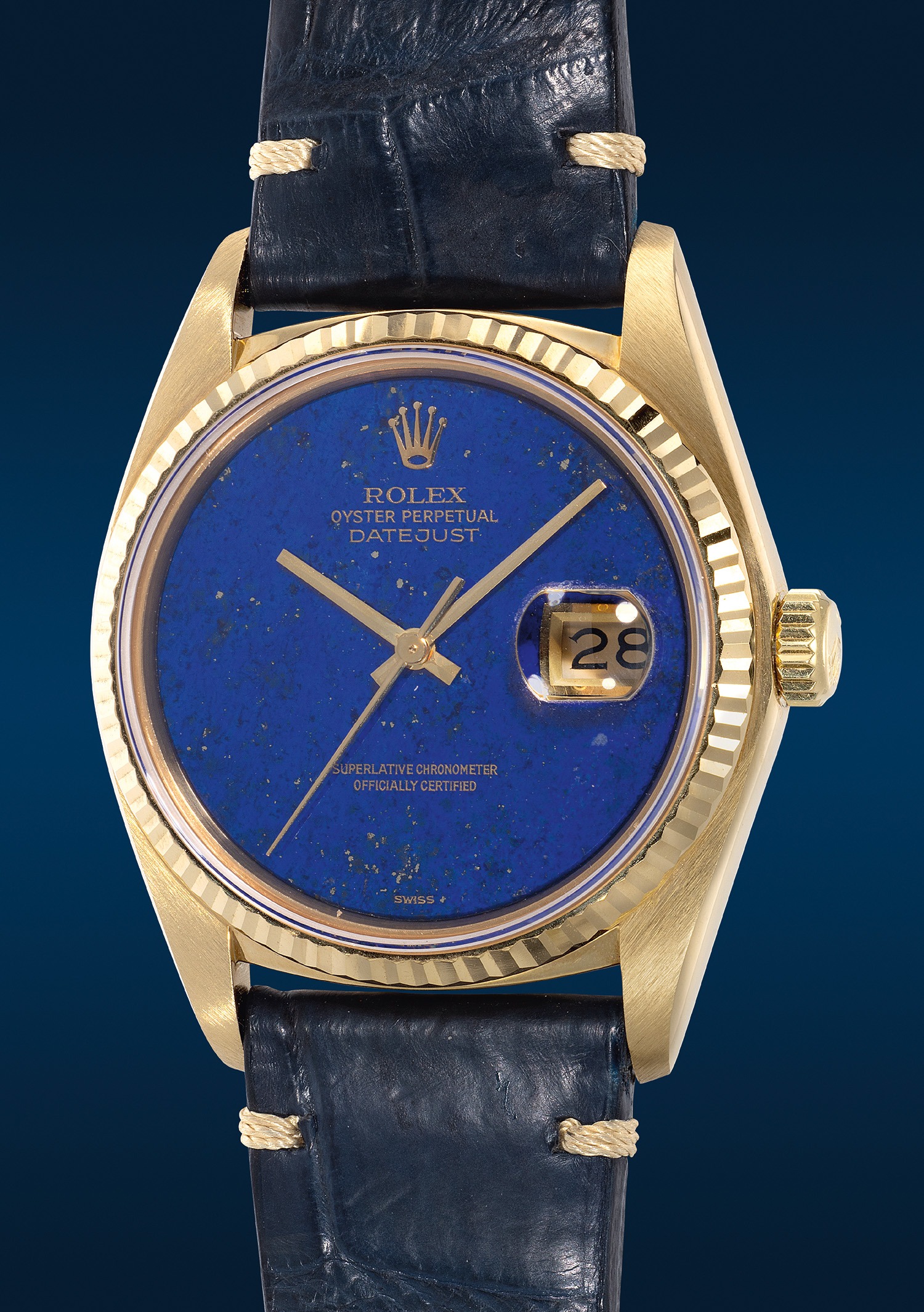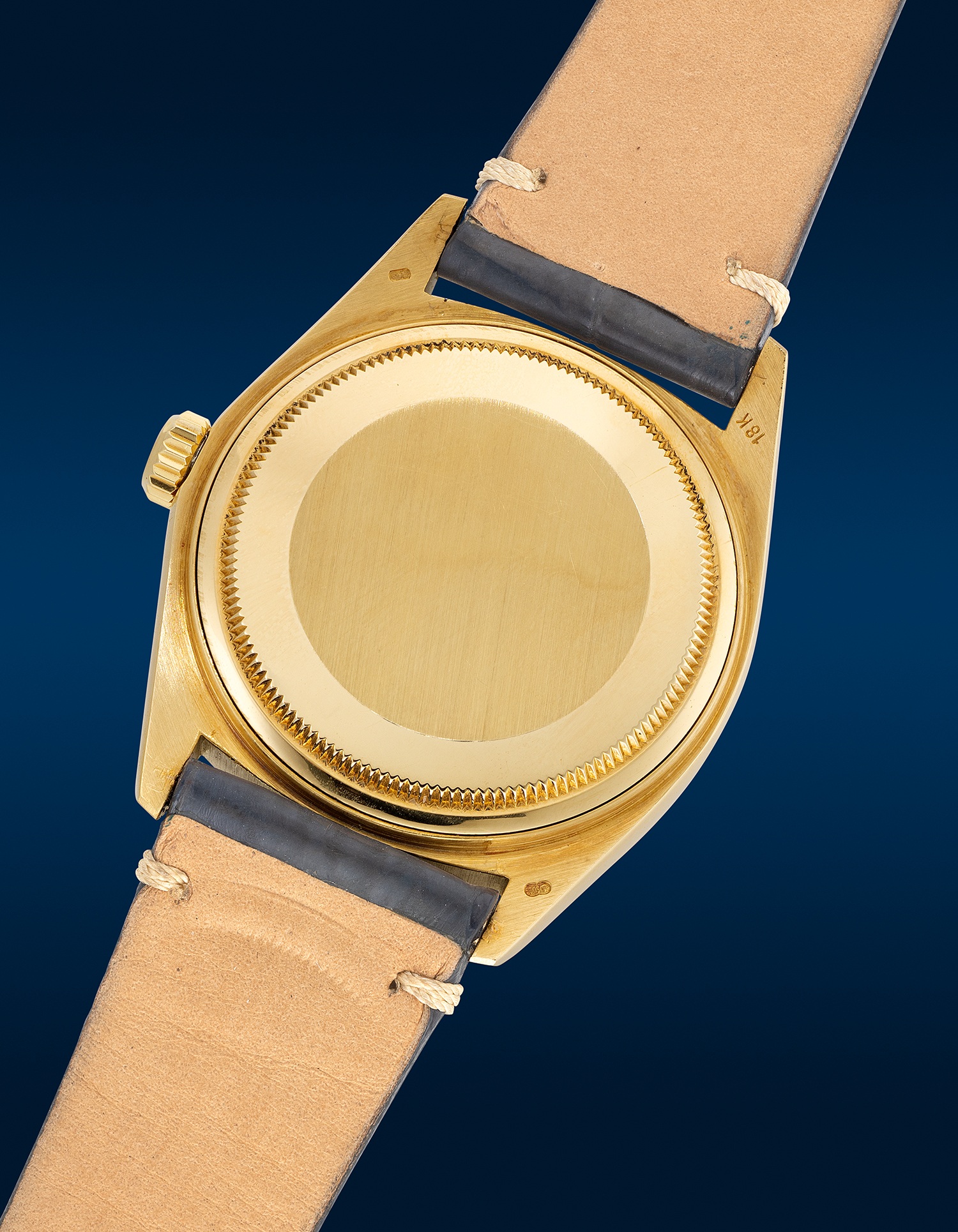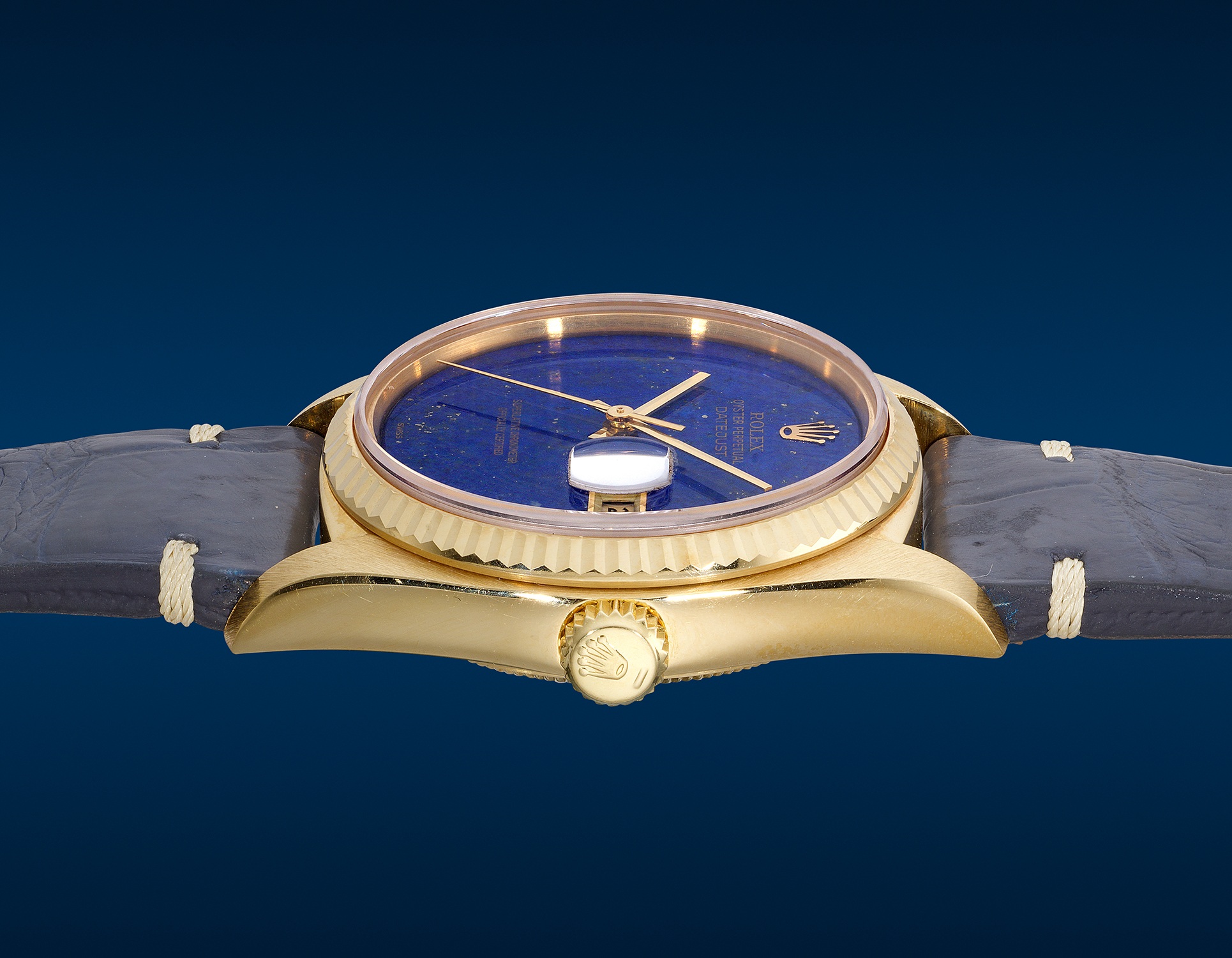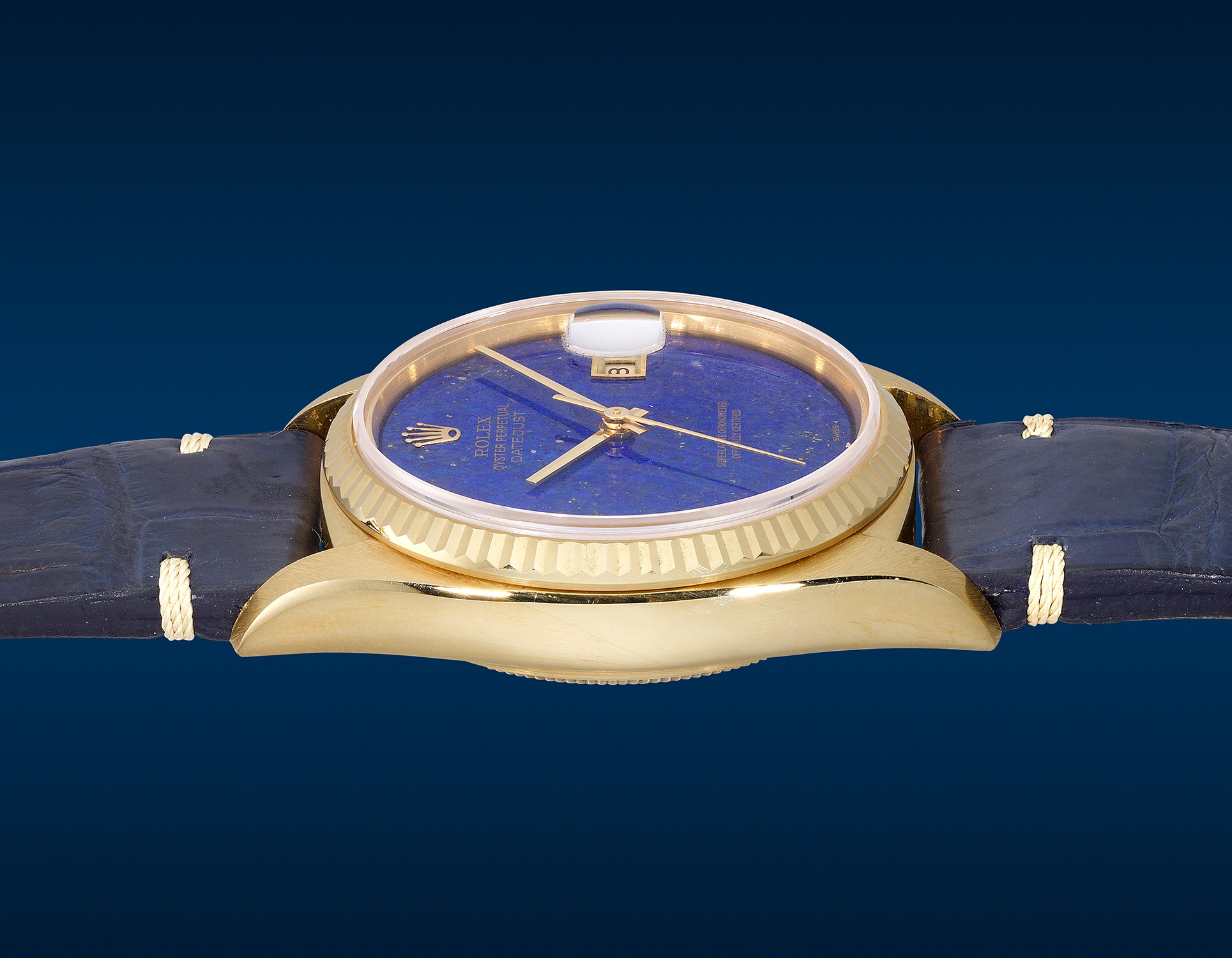







1030Σ
Rolex
Ref. 16018, inside caseback stamped “16000”
Datejust
A well-preserved, fine and very rare yellow gold wristwatch with center seconds, date and lapis lazuli dial
Full-Cataloguing
Each lapis lazuli dial is unique in appearance due to the naturally occurring calcite and pyrite deposits within the stone. The present timepiece is in superb condition, boasting a very well-preserved dial with subtle hints of pyrite flecks. Its case is exceptionally well kept, showcasing sharp edges and minimal signs of wear. It is worth noting that while stone dials are often associated with the Day-Date model, they are rarer to find on a Datejust, making this timepiece even more special.
Rolex
Swiss | 1905Founded in 1905 England by Hans Wilsdorf and Alfred Davis as Wilsdorf & Davis, it soon became known as the Rolex Watch Company in 1915, moving its headquarters to Geneva in 1919. Like no other company, the success of the wristwatch can be attributed to many of Rolex's innovations that made them one of the most respected and well-known of all luxury brands. These innovations include their famous "Oyster" case — the world's first water resistant and dustproof watch case, invented in 1926 — and their "Perpetual" — the first reliable self-winding movement for wristwatches launched in 1933. They would form the foundation for Rolex's Datejust and Day-Date, respectively introduced in 1945 and 1956, but also importantly for their sports watches, such as the Explorer, Submariner and GMT-Master launched in the mid-1950s.
One of its most famous models is the Cosmograph Daytona. Launched in 1963, these chronographs are without any doubt amongst the most iconic and coveted of all collectible wristwatches. Other key collectible models include their most complicated vintage watches, including references 8171 and 6062 with triple calendar and moon phase, "Jean Claude Killy" triple date chronograph models and the Submariner, including early "big-crown" models and military-issued variants.